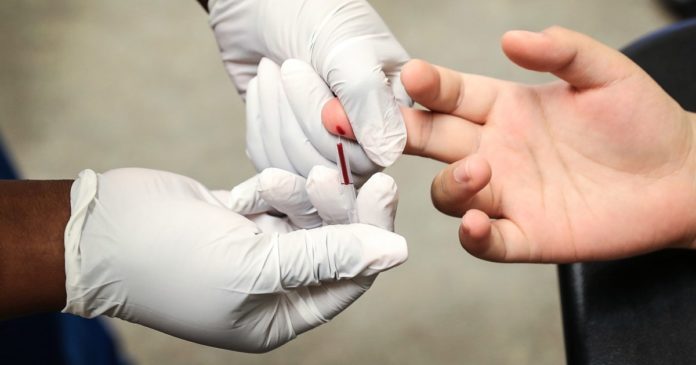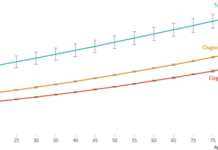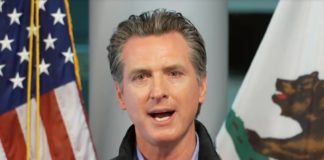
Confronted by the Covid-19 pandemic, an ambitious new plan by the federal government, marshaled by Dr. Anthony Fauci, to accelerate the battle against the stubbornly persistent HIV epidemic in the U.S. appears to have made a markedly disappointing debut.
The Centers for Disease Control and Prevention’s annual HIV Surveillance Report, published Tuesday, provides the first major bird’s-eye view of the turn the country’s four-decade-old epidemic took after the coronavirus upended society. The report, which includes 2020 data, follows worrisome previous findings that HIV testing plunged as stay-at-home orders swept the country in March 2020.
CDC officials have expressed concern that the extraordinary disruptions the country’s Covid response have caused to HIV-related services have inflicted collateral damage that could take years to undo. It even remains possible that, after decades of hard-fought declines, the national HIV transmission rate has crept up again.
“We definitely had a hit from Covid-19,” said Dr. Demetre Daskalakis, the director of the CDC’s Division of HIV/AIDS Prevention. He called 2020 “a lost year” for the HIV fight, even amid the launch of a federal plan called Ending the HIV Epidemic in the U.S., or EHE. “We don’t really know where HIV transmission is going to land, but it’s something that we obviously are concerned about,” he added.
Epidemiologists further fear that the stark disparities that have long plagued the country during the HIV epidemic — including those based on race, sexual orientation, gender identity and region — may have only worsened during the chaotic Covid era.
Concerning signs
The CDC report indicates that after they declined by no more than 3 percent annually since 2016, HIV diagnoses dropped by 17 percent from 2019 to 2020, to 30,403 new positive test results.
That is a foreboding sign, experts say.
“I think that there are likely many more individuals who are undiagnosed than we have had in recent years,” said Dr. Hansel Tookes, an internist in the division of infectious diseases at the University of Miami Miller School of Medicine. Delays in HIV diagnosis, he warned, “of course cause increases in transmission.”
People who recently contracted HIV, Tookes said, tend to have very high viral loads, which renders the virus much more transmissible. Conversely, researchers have determined that suppressing HIV to an undetectable level with antiretroviral therapies not only helps increase life expectancy to near normal but also eliminates the risk of sexual transmission of the virus.
The HIV Surveillance Report found that nearly 1.1 million people were living with diagnosed HIV in the U.S. of 2020. The CDC previously estimated, based on 2019 data, that 1.2 million Americans have HIV, including those who are undiagnosed. Because of insufficient 2020 data, the agency has not been able to update that figure.
A study published in The Lancet in December analyzed data from four major U.S. health care systems and found that compared with 2019, the weekly HIV testing rate was 68 percent to 97 percent lower during states’ initial Covid-19 stay-at-home periods in 2020. The rate remained 11 percent to 54 percent lower during periods with fewer societal restrictions the same year.
Similarly, a recent CDC analysis indicated that the number of CDC-funded HIV tests conducted by the country’s health departments plunged by nearly half from 2019 to 2020, from 2.3 million to 1.2 million.
The steep drop-off, along with other interruptions in clinical services for the virus, have compromised the agency’s precision in assessing the dynamics of the HIV epidemic. The CDC has been unable, consequently, to issue its annual updated estimate of recent transmission rates. So the epidemic’s true course is likely to remain hazy for some time, Daskalakis said, hampering public health officials’ ability to respond in kind.
The Lancet paper’s lead author, Ethan Moitra, a professor of psychiatry and human behavior at Brown University, said that during the Covid era, the forces that drive HIV transmission, including sexual risk-taking, appear to have persisted largely unabated. Substance use, which can fuel HIV’s spread, has also increased.
The CDC reported last month that despite reduced testing, diagnoses of most sexually transmitted infections climbed to record heights in 2020.
When hope met catastrophe
The dawning of the new decade was supposed to represent a major turning point for the U.S. HIV epidemic. Fauci, the longtime head of the National Institute of Allergy and Infectious Diseases, and his colleagues at the overarching Department of Health and Human Services had secured President Donald Trump’s blessing for a major increase in federal HIV funding. The goal was to finally send the virus into retreat.
Congress appropriated $267 million in new funding, spread across several federal health agencies, for the Ending the HIV Epidemic in the U.S. initiative for 2020. That provided $140 million for the CDC’s HIV prevention efforts, in particular, increasing the budget by 18 percent, from $788 million to $928 million. The overall EHE appropriation ballooned to $405 million for 2021 and $473 million for 2022.
The program “obviously got off to a rough start,” Tookes said, given the inopportune timing of its launch.
Daskalakis said, the EHE program’s implementation was considerably compromised given that state and local health departments, as well as HIV-focused community-based organizations, pivoted to combat Covid starting in 2020 — rightly so, he said. Staffing shortages and burnout abounded.
Fauci, who has led the country’s Covid response, declined an interview because he had not yet seen the new CDC report.
James Krellenstein, a co-founder of the activist group PrEP4All, argued that the EHE program’s professed goals — to reduce new HIV transmissions by 75 percent by 2025 and by at least 90 percent by 2030 — were always highly aspirational. Hitting such targets, he said, would require an almost unprecedentedly dramatic shift in the epidemic’s course. The CDC estimates that from 2015 to 2019, the HIV transmission rate declined by only 8 percent, from 37,800 to 34,800 new cases.
“The real question about this program was how was it going to achieve any of these targets,” Krellenstein said. “For the past decade, the U.S. has set ever ambitious targets for HIV treatment and prevention, but we rarely, if ever, meet them. We would need true innovation to break through a failed status quo in HIV treatment and prevention.”
HIV prevention pill’s unrealized power
The Covid-19 pandemic also appears to have stalled heady progress in the scale-up of pre-exposure prophylaxis, or PrEP, the daily prescription medication approved for HIV prevention in 2012. According to the CDC’s rough estimate, the proportion of those at high risk of the virus who were receiving PrEP leapt from 13 percent to 23 percent from 2017 to 2019. But then the figure inched up only to 25 percent in 2020.
That is troubling news for the efforts to combat HIV among gay and bisexual men, who are the vast majority of PrEP users and account for two-thirds of new HIV acquisitions (and perhaps only 2 percent of the U.S. population). A CDC report in December estimated that from 2010 to 2019, new HIV cases among this population declined only slightly, from 25,100 to 23,100 — a shift that wasn’t even statistically significant.
A major reason PrEP hasn’t had a greater impact in the U.S., despite its approximately 300,000 users, is that the medication has remained woefully underused by those with the highest HIV acquisition rates: gay and bisexual men of color, especially those living in the South, where about half of new HIV transmissions occur. Instead, PrEP’s use has remained predominantly relegated to white gay and bi men, who have long had declining HIV rates.
PrEP does boast proven potential to succeed on a national level — abroad. Thanks in part to PrEP’s introduction, new HIV cases among English gay and bi men plunged by 71 percent from 2012 to 2018. Australia’s HIV rate in the demographic fell by about 69 percent during the 2010s. U.S. cities where PrEP use is particularly entrenched within the gay community, including New York and San Francisco, have also had rapid declines in HIV over the past decade.
Treatment as prevention
Wealthy foreign countries’ greater progress in controlling transmission is also likely due to their much more successful efforts in treating HIV, which prevents transmission.
The proportion of people with HIV who have fully suppressed viral loads is approaching 90 percent in the United Kingdom, Australia, Norway, Switzerland and Sweden. A new CDC analysis of 45 U.S. jurisdictions estimated the U.S. rate at only 68 percent in 2020, placing the U.S. near the bottom of the rankings of rich countries. The upside is that even in the face of the Covid pandemic, the U.S. figure was an uptick from the 2019 rate of 66 percent.
The CDC attributes the apparent relative stability of the U.S. viral suppression rate in part to widespread innovations in the delivery of health care services, such as the use of telehealth, which helped keep people with HIV in medical care even in the face of Covid-related restrictions.
Dr. Kenneth Mayer, the medical research director at Fenway Health in Boston, said his clinic’s enthusiastic adoption of telehealth over the past two years has been a godsend to its HIV-positive patients. Yet he questioned the reliability of the CDC’s 2020 viral suppression figure, presuming that viral load-testing declined nationwide — suggesting that the true statistic might be lower.
Tookes, who cares for a particularly vulnerable HIV population in Miami, reported that many of his patients dropped out of medical care after Covid hit, only to return in recent days, devastatingly ill with multiple AIDS-defining diagnoses.
An epidemic defined by inequities
Throughout its four-decade history, HIV has both exposed and exploited societal fault lines. The Covid era appears only to have aggravated the inequities.
“Certainly telemedicine has been a major revolution,” Mayer said. “It works well for a lot of people. But the concern is the digital divide. Who are the people who don’t have a stable broadband internet connection, and how are they being engaged?”
HIV continues to disproportionately devastate the South, with efforts to control the virus impeded in part by the refusal of most of the region’s state governments to expand Medicaid access under the Affordable Care Act. Overall, the South’s diagnosis rate was twice that of the Midwest’s in 2020, the CDC reported. Georgia, home to the CDC itself, had the highest HIV diagnosis rate that year — at 22 diagnoses per 100,000 people, compared with a rate of just 12 per 100,000 in New York and California.
The virus also remains a crisis for Black Americans, who despite being 13 percent of the U.S. population comprised 42 percent of diagnoses in 2020, for a diagnosis rate eight times that of whites. Black gay and bisexual men and transgender women have staggeringly high HIV rates.
Daskalakis expressed concern that after decades of declines, new HIV cases among people who inject drugs appeared to have flattened in recent years — and might be poised to rise again as the opioid epidemic only worsens during the Covid era. He said the recent HIV outbreaks driven by drug-needle sharing in West Virginia and Boston were “a canary in the coal mine.”
Even in the face of the numerous challenges for the U.S. HIV fight, Carl Schmid, the executive director of the HIV+Hepatitis Policy Institute in Washington, remains adamantly sanguine, eager to see the silver linings.
“It could’ve been worse,” he said of the CDC report’s findings. “And there are elements that show progress, despite Covid.”
Schmid said he looks forward to a future edition of the report’s reflecting the impact of scaled-up federal HIV spending.
“I think it will show we are on the right track.”








